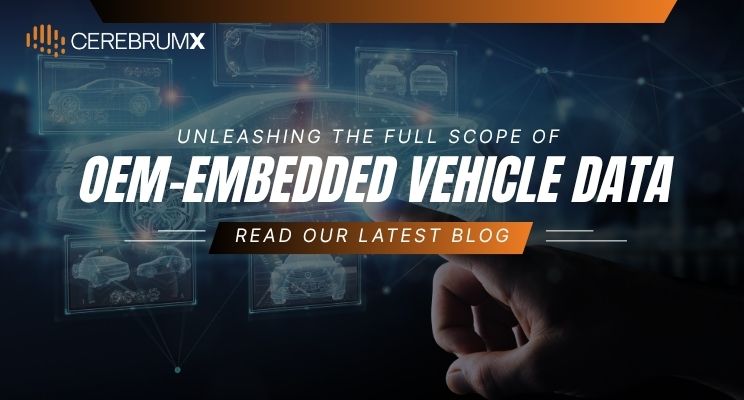In modern fleet operations, data is the fuel driving new ventures. But not all data is refined the same way. Aftermarket dongles have long been a staple for tracking location, speed, and a handful of fault codes. Yet, as vehicles roll off the line with hundreds of native sensors and high‑bandwidth telematics modules, a broader, deeper and inherently richer stream is now available. OEM‑embedded data, which leverages that factory‑fit feed to move fleet management from incremental optimization to panoramic control.
Breadth That Begins at the ECU
An aftermarket dongle typically accesses OBD‑II parameters, which are valuable, but limited to standard PIDs. OEM‑embedded pipelines surface thousands of data elements directly from electronic control units (ECUs): state of charge for EV batteries, high‑resolution accelerometer traces, ADAS camera status, lane‑keeping events, seat‑belt occupancy, and more. The result is vertical depth (diagnostics) and horizontal breadth (safety, efficiency, sustainability) impossible to replicate with a plug‑in device.
Real-Time Precision: Millisecond-Level Updates
Dongles batch‑upload data every 30–60 seconds to conserve SIM costs. OEM modules stream at millisecond intervals over secure LTE/5G networks, delivering event‑level granularity for harsh‑braking, near‑miss, or over‑RPM situations. For dispatchers making split‑second routing or safety decisions, that fidelity is the difference between reacting and preventing.
Native Security & Compliance
Embedded channels inherit OEM‑grade encryption, secure boot, and certified authentication. Hardware tamper risks vanish as there is no device to unplug. That matters when you operate across regions with evolving data‑sovereignty laws or manage hazardous‑goods fleets where proof of data integrity is non‑negotiable.
Expanded Use‑Case Surface
- Predictive maintenance 2.0 – Instead of generic DTCs, pull oil‑degradation indices or brake‑pad thickness directly from sensors, scheduling service before a fault lamp ever illuminates.
- Insurance & risk scoring – Capture Lane‑departure warnings, ABS activations, and driver‑assist disengagements to build powerful safety models.
- EV energy management – Monitor real‑time battery temperature, state‑of‑health and DC‑fast‑charge cycles to extend pack life and optimize route planning.
- Regulatory reporting – Feed verified odometer and emissions data straight to compliance portals and filings.
Operational Efficiencies at Scale
Hardware procurement, shipping, installation, and operational processes erode ROI on dongle, especially across multi‑brand, multinational fleets. Embedded data eliminates truck rolls for installs and updates: software configuration happens over‑the‑air. As fleets electrify, the total cost advantage widens; EVs often lack standard OBD power during key‑off charging, where embedded telematics remains alive.
Complement, Don’t Cancel, Existing Dongle Deployments
Transitioning to embedded does not mean your existing vehicles or devices suddenly become redundant. Mixed‑model fleets can blend OEM feeds with dongle inputs via a unifying platform (like the CerebrumX platform) that normalizes, deduplicates, and enriches data. You maintain coverage for legacy assets while progressively shifting to richer native-data streams.
A Wider Lens for Better Decisions
Where dongles once offered the only affordable telemetry option, OEM‑embedded data now opens a panoramic lens—deeper diagnostics, faster cadence, and built‑in security. Forward‑looking fleet operators will use that wide scope to graduate from knowing where assets are, to knowing exactly how they’re performing and what they’ll do next.
Curious how much wider your viewpoint can be? Reach out at connect@cerebrumx.ai to learn more.

